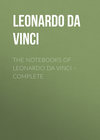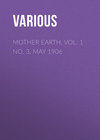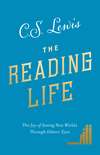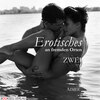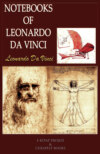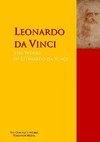Kitabı oku: «The Notebooks of Leonardo Da Vinci. Complete», sayfa 26
There are yet a few original drawings by Leonardo which might be mentioned here as possibly belonging to the cartoon of the Battle; such as the pen and ink sketches on Pl. XXI and on Pl. XXXVIII, No. 3, but we should risk too wide a departure from the domain of ascertained fact.
With regard to the colours and other materials used by Leonardo the reader may be referred to the quotations from the accounts for the picture in question given by Milanesi in his edition of Vasari (Vol. IV, p. 44, note) where we find entries of a similar character to those in Leonardo's note books for the year 1505; S. K. M. 12 (see No. 636).
That Leonardo was employed in designing decorations and other preparations for high festivals, particularly for the court of Milan, we learn not only from the writings of his contemporaries but from his own incidental allusions; for instance in MS. C. l5b (1), l. 9. In the arrangement of the texts referring to this I have placed those first, in which historical personages are named—Nos. 670-674. Among the descriptions of Allegorical subjects two texts lately found at Oxford have been included, Nos. 676 and 677. They are particularly interesting because they are accompanied by large sketches which render the meaning of the texts perfectly clear. It is very intelligible that in other cases, where there are no illustrative sketches, the notes must necessarily remain obscure or admit of various interpretations. The literature of the time affords ample evidence of the use of such allegorical representations, particularly during the Carnival and in Leonardo's notes we find the Carnival expressly mentioned—Nos. 685 and 704. Vasari in his Life of Pontormo, particularly describes that artist's various undertakings for Carnival festivities. These very graphic descriptions appear to me to throw great light in more ways than one on the meaning of Leonardo's various notes as to allegorical representations and also on mottoes and emblems—Nos. 681-702. In passing judgment on the allegorical sketches and emblems it must not be overlooked that even as pictures they were always accompanied by explanations in words. Several finished drawings of allegorical compositions or figures have been preserved, but as they have no corresponding explanation in the MSS. they had no claim to be reproduced here. The female figure on Pl. XXVI may perhaps be regarded as a study for such an allegorical painting, of which the purport would have been explained by an inscription.
On Madonna pictures.
663
[In the autumn of] 1478 I began the two Madonna [pictures].
[Footnote: Photographs of this page have been published by BRAUN, No. 439, and PHILPOT, No. 718.
1. Incominciai. We have no other information as to the two pictures of the Madonna here spoken of. As Leonardo here tells us that he had begun two Madonnas at the same time, the word 'incominciai' may be understood to mean that he had begun at the same time preparatory studies for two pictures to be painted later. If this is so, the non-existence of the pictures may be explained by supposing that they were only planned and never executed. I may here mention a few studies for pictures of the Madonna which probably belong to this early time; particularly a drawing in silver-point on bluish tinted paper at Windsor—see Pl. XL, No. 3—, a drawing of which the details have almost disappeared in the original but have been rendered quite distinct in the reproduction; secondly a slight pen and ink sketch in, the Codex VALLARDI, in the Louvre, fol. 64, No. 2316; again a silver point drawing of a Virgin and child drawn over again with the pen in the His de la Salle collection also in the Louvre, No. 101. (See Vicomte BOTH DE TAUZIA, Notice des dessins de la collection His de la Salle, exposes au Louvre. Paris 1881, pp. 80, 81.) This drawing is, it is true, traditionally ascribed to Raphael, but the author of the catalogue very justly points out its great resemblance with the sketches for Madonnas in the British Museum which are indisputably Leonardo's. Some of these have been published by Mr. HENRY WALLIS in the Art Journal, New Ser. No. 14, Feb. 1882. If the non-existence of the two pictures here alluded to justifies my hypothesis that only studies for such pictures are meant by the text, it may also be supposed that the drawings were made for some comrade in VERROCCHIO'S atelier. (See VASARI, Sansoni's ed. Florence 1880. Vol. IV, p. 564): "E perche a Lerenzo piaceva fuor di modo la maniera di Lionardo, la seppe cosi bene imitare, che niuno fu che nella pulitezza e nel finir l'opere con diligenza l'imitasse piů di lui." Leonardo's notes give me no opportunity of discussing the pictures executed by him in Florence, before he moved to Milan. So the studies for the unfinished picture of the Adoration of the Magi—in the Uffizi, Florence—cannot be described here, nor would any discussion about the picture in the Louvre "La Vierge aux Rochers" be appropriate in the absence of all allusion to it in the MSS. Therefore, when I presently add a few remarks on this painting in explanation of the Master's drawings for it, it will be not merely with a view to facilitate critical researches about the picture now in the National Gallery, London, which by some critics has been pronounced to be a replica of the Louvre picture, but also because I take this opportunity of publishing several finished studies of the Master's which, even if they were not made in Florence but later in Milan, must have been prior to the painting of the Last Supper. The original picture in Paris is at present so disfigured by dust and varnish that the current reproductions in photography actually give evidence more of the injuries to which the picture has been exposed than of the original work itself. The wood-cut given on p. 344, is only intended to give a general notion of the composition. It must be understood that the outline and expression of the heads, which in the picture is obscured but not destroyed, is here altogether missed. The facsimiles which follow are from drawings which appear to me to be studies for "La Vierge aux Rochers."
1. A drawing in silver point on brown toned paper of a woman's head looking to the left. In the Royal Library at Turin, apparently a study from nature for the Angel's head (Pl. XLII).
2. A study of drapery for the left leg of the same figure, done with the brush, Indian ink on greenish paper, the lights heightened with white.
The original is at Windsor, No. 223. The reproduction Pl. XLIII is defective in the shadow on the upper part of the thigh, which is not so deep as in the original; it should also be observed that the folds of the drapery near the hips are somewhat altered in the finished work in the Louvre, while the London copy shows a greater resemblance to this study in that particular.
3. A study in red chalk for the bust of the Infant Christ—No. 3 in the Windsor collection (Pl. XLIV). The well-known silver-point drawing on pale green paper, in the Louvre, of a boy's head (No. 363 in REISET, Notice des dessins, Ecoles d'Italie) seems to me to be a slightly altered copy, either from the original picture or from this red chalk study.
4. A silver-point study on greenish paper, for the head of John the Baptist, reproduced on p. 342. This was formerly in the Codex Vallardi and is now exhibited among the drawings in the Louvre. The lights are, in the original, heightened with white; the outlines, particularly round the head and ear, are visibly restored.
There is a study of an outstretched hand—No. 288 in the Windsor collection—which was published in the Grosvenor Gallery Publication, 1878, simply under the title of: "No. 72 Study of a hand, pointing" which, on the other hand, I regard as a copy by a pupil. The action occurs in the kneeling angel of the Paris picture and not in the London copy.
These four genuine studies form, I believe, a valuable substitute in the absence of any MS. notes referring to the celebrated Paris picture.]
Bernardo di Bandino's Portrait.
664
A tan-coloured small cap, A doublet of black serge, A black jerkin lined A blue coat lined, with fur of foxes' breasts, and the collar of the jerkin covered with black and white stippled velvet Bernardo di Bandino Baroncelli; black hose.
[Footnote: These eleven lines of text are by the side of the pen and ink drawing of a man hanged—Pl. LXII, No. 1. This drawing was exhibited in 1879 at the Ecole des Beaux-Arts in Paris and the compilers of the catalogue amused themselves by giving the victim's name as follows: "Un pendu, vetu d'une longue robe, les mains liées sur le dos … Bernardo di Bendino Barontigni, marchand de pantalons" (see Catalogue descriptif des Dessins de Mailres anciens exposes a l'Ecole des Beaux Arts, Paris 1879; No. 83, pp. 9-10). Now, the criminal represented here, is none other than Bernardino di Bandino Baroncelli the murderer of Giuliano de'Medici, whose name as a coadjutor in the conspiracy of the Pazzi has gained a melancholy notoriety by the tragedy of the 26th April 1478. Bernardo was descended from an ancient family and the son of the man who, under King Ferrante, was President of the High Court of Justice in Naples. His ruined fortunes, it would seem, induced him to join the Pazzi; he and Francesco Pazzi were entrusted with the task of murdering Giuliano de'Medici on the fixed day. Their victim not appearing in the cathedral at the hour when they expected him, the two conspirators ran to the palace of the Medici and induced him to accompany them. Giuliano then took his place in the chancel of the Cathedral, and as the officiating priest raised the Host—the sign agreed upon—Bernardo stabbed the unsuspecting Giuliano in the breast with a short sword; Giuliano stepped backwards and fell dead. The attempt on Lorenzo's life however, by the other conspirators at the same moment, failed of success. Bernardo no sooner saw that Lorenzo tried to make his escape towards the sacristy, than he rushed upon him, and struck down Francesco Nori who endeavoured to protect Lorenzo. How Lorenzo then took refuge behind the brazen doors of the sacristy, and how, as soon as Giuliano's death was made known, the further plans of the conspirators were defeated, while a terrible vengeance overtook all the perpetrators and accomplices, this is no place to tell. Bernardo Bandini alone seemed to be favoured by fortune; he hid first in the tower of the Cathedral, and then escaped undiscovered from Florence. Poliziano, who was with Lorenzo in the Cathedral, says in his 'Conjurationis Pactianae Commentarium': "Bandinus fugitans in Tiphernatem incidit, a quo in aciem receptus Senas pervenit." And Gino Capponi in summing up the reports of the numerous contemporary narrators of the event, says: "Bernardo Bandini ricoverato in Costantinopoli, fu per ordine del Sultano preso e consegnato a un Antonio di Bernardino dei Medici, che Lorenzo aveva mandato apposta in Turchia: cosě era grande la potenza di quest' uomo e grande la voglia di farne mostra e che non restasse in vita chi aveagli ucciso il fratello, fu egli applicato appena giunto" (Storia della Republica di Firenze II, 377, 378). Details about the dates may be found in the Chronichetta di Belfredello Strinati Alfieri: "Bernardo di Bandino Bandini sopradetto ne venne preso da Gostantinopoti a dě 14. Dicembre 1479 e disaminato, che fu al Bargello, fu impiccato alle finestre di detto Bargello allato alla Doana a dě 29. Dicembre MCCCCLXXIX che pochi dě stette." It may however be mentioned with reference to the mode of writing the name of the assassin that, though most of his contemporaries wrote Bernardo Bandini, in the Breve Chronicon Caroli Petri de Joanninis he is called Bernardo di Bandini Baroncelli; and, in the Sententiae Domini Matthaei de Toscana, Bernardus Joannis Bandini de Baroncellis, as is written on Leonardo's drawing of him when hanged. Now VASARI, in the life of Andrea del Castagno (Vol. II, 680; ed. Milanesi 1878), tells us that in 1478 this painter was commissioned by order of the Signoria to represent the members of the Pazzi conspiracy as traitors, on the facade of the Palazzo del Podestŕ—the Bargello. This statement is obviously founded on a mistake, for Andrea del Castagno was already dead in 1457. He had however been commissioned to paint Rinaldo degli Albizzi, when declared a rebel and exiled in 1434, and his adherents, as hanging head downwards; and in consequence he had acquired the nickname of Andrea degl' Impiccati. On the 21st July 1478 the Council of Eight came to the following resolution: "item servatis etc. deliberaverunt et santiaverunt Sandro Botticelli pro ejus labore in pingendo proditores flor. quadraginta largos" (see G. MILANESI, Arch. star. VI (1862) p. 5 note.)
As has been told, Giuliano de' Medici was murdered on the 26th April 1478, and we see by this that only three months later Botticelli was paid for his painting of the "proditores". We can however hardly suppose that all the members of the conspiracy were depicted by him in fresco on the facade of the palace, since no fewer than eighty had been condemned to death. We have no means of knowing whether, besides Botticelli, any other painters, perhaps Leonardo, was commissioned, when the criminals had been hanged in person out of the windows of the Palazzo del Podestŕ to represent them there afterwards in effigy in memory of their disgrace. Nor do we know whether the assassin who had escaped may at first not have been provisionally represented as hanged in effigy. Now, when we try to connect the historical facts with this drawing by Leonardo reproduced on Pl. LXII, No. I, and the full description of the conspirator's dress and its colour on the same sheet, there seems to be no reasonable doubt that Bernardo Bandini is here represented as he was actually hanged on December 29th, 1479, after his capture at Constantinople. The dress is certainly not that in which he committed the murder. A long furred coat might very well be worn at Constantinople or at Florence in December, but hardly in April. The doubt remains whether Leonardo described Bernardo's dress so fully because it struck him as remarkable, or whether we may not rather suppose that this sketch was actually made from nature with the intention of using it as a study for a wall painting to be executed. It cannot be denied that the drawing has all the appearance of having been made for this purpose. Be this as it may, the sketch under discussion proves, at any rate, that Leonardo was in Florence in December 1479, and the note that accompanies it is valuable as adding one more characteristic specimen to the very small number of his MSS. that can be proved to have been written between 1470 and 1480.]
Notes on the Last Supper (665-668).
665
One who was drinking and has left the glass in its position and turned his head towards the speaker.
Another, twisting the fingers of his hands together turns with stern brows to his companion [6]. Another with his hands spread open shows the palms, and shrugs his shoulders up his ears making a mouth of astonishment [8].
[9] Another speaks into his neighbour's ear and he, as he listens to him, turns towards him to lend an ear [10], while he holds a knife in one hand, and in the other the loaf half cut through by the knife. [13] Another who has turned, holding a knife in his hand, upsets with his hand a glass on the table [14].
[Footnote 665, 666: In the original MS. there is no sketch to accompany these passages, and if we compare them with those drawings made by Leonardo in preparation for the composition of the picture—Pl. XLV, XLVI—, (compare also Pl. LII, 1 and the drawings on p. 297) it is impossible to recognise in them a faithful interpretation of the whole of this text; but, if we compare these passages with the finished picture (see p. 334) we shall see that in many places they coincide. For instance, compare No. 665, 1. 6—8, with the fourth figure on the right hand of Christ. The various actions described in lines 9—10, 13—14 are to be seen in the group of Peter, John and Judas; in the finished picture however it is not a glass but a salt cellar that Judas is upsetting.]
666
Another lays his hand on the table and is looking. Another blows his mouthful. [3] Another leans forward to see the speaker shading his eyes with his hand. [5] Another draws back behind the one who leans forward, and sees the speaker between the wall and the man who is leaning [Footnote: 6. chinato. I have to express my regret for having misread this word, written cinato in the original, and having altered it to "ciclo" when I first published this text, in 'The Academy' for Nov. 8, 1879 immediately after I had discovered it, and subsequently in the small biography of Leonardo da Vinci (Great Artists) p. 29.].
[Footnote: In No. 666. Line I must refer to the furthest figure on the left; 3, 5 and 6 describe actions which are given to the group of disciples on the left hand of Christ.]
667
CHRIST.
Count Giovanni, the one with the Cardinal of Mortaro.
[Footnote: As this note is in the same small Manuscript as the passage here immediately preceding it, I may be justified in assuming that Leonardo meant to use the features of the person here named as a suitable model for the figure of Christ. The celebrated drawing of the head of Christ, now hanging in the Brera Gallery at Milan, has obviously been so much restored that it is now impossible to say, whether it was ever genuine. We have only to compare it with the undoubtedly genuine drawings of heads of the disciples in PI. XLVII, XLVIII and L, to admit that not a single line of the Milan drawing in its present state can be by the same hand.]
668
Philip, Simon, Matthew, Thomas, James the Greater, Peter, Philip, Andrew, Bartholomew.
[Footnote: See PI. XLVI. The names of the disciples are given in the order in which they are written in the original, from right to left, above each head. The original drawing is here slightly reduced in scale; it measures 39 centimetres in length by 26 in breadth.]
669
On the battle of Anghiari.
Florentine
Neri di Gino Capponi
Bernardetto de' Medici
Micheletto,
Niccolo da Pisa
Conte Francesco
Pietro Gian Paolo
Guelfo Orsino,
Messer Rinaldo degli
Albizzi
Begin with the address of Niccolo Piccinino to the soldiers and the banished Florentines among whom are Messer Rinaldo degli Albizzi and other Florentines. Then let it be shown how he first mounted on horseback in armour; and the whole army came after him—40 squadrons of cavalry, and 2000 foot soldiers went with him. Very early in the morning the Patriarch went up a hill to reconnoitre the country, that is the hills, fields and the valley watered by a river; and from thence he beheld Niccolo Picinino coming from Borgo San Sepolcro with his people, and with a great dust; and perceiving them he returned to the camp of his own people and addressed them. Having spoken he prayed to God with clasped hands, when there appeared a cloud in which Saint Peter appeared and spoke to the Patriarch.—500 cavalry were sent forward by the Patriarch to hinder or check the rush of the enemy. In the foremost troop Francesco the son of Niccolo Piccinino [24] was the first to attack the bridge which was held by the Patriarch and the Florentines. Beyond the bridge to his left he sent forward some infantry to engage ours, who drove them back, among whom was their captain Micheletto [29] whose lot it was to be that day at the head of the army. Here, at this bridge there is a severe struggle; our men conquer and the enemy is repulsed. Here Guido and Astorre, his brother, the Lord of Faenza with a great number of men, re-formed and renewed the fight, and rushed upon the Florentines with such force that they recovered the bridge and pushed forward as far as the tents. But Simonetto advanced with 600 horse, and fell upon the enemy and drove them back once more from the place, and recaptured the bridge; and behind him came more men with 2000 horse soldiers. And thus for a long time they fought with varying fortune. But then the Patriarch, in order to divert the enemy, sent forward Niccolo da Pisa [44] and Napoleone Orsino, a beardless lad, followed by a great multitude of men, and then was done another great feat of arms. At the same time Niccolo Piccinino urged forward the remnant of his men, who once more made ours give way; and if it had not been that the Patriarch set himself at their head and, by his words and deeds controlled the captains, our soldiers would have taken to flight. The Patriarch had some artillery placed on the hill and with these he dispersed the enemy's infantry; and the disorder was so complete that Niccolo began to call back his son and all his men, and they took to flight towards Borgo. And then began a great slaughter of men; none escaped but the foremost of those who had fled or who hid themselves. The battle continued until sunset, when the Patriarch gave his mind to recalling his men and burying the dead, and afterwards a trophy was erected.
[Footnote: 669. This passage does not seem to me to be in Leonardo's hand, though it has hitherto been generally accepted as genuine. Not only is the writing unlike his, but the spelling also is quite different. I would suggest that this passage is a description of the events of the battle drawn up for the Painter by order of the Signoria, perhaps by some historian commissioned by them, to serve as a scheme or programme of the work. The whole tenor of the style seems to me to argue in favour of this theory; and besides, it would be in no way surprising that such a document should have been preserved among Leonardo's autographs.]
Allegorical representations referring to the duke of Milan (670-673).
